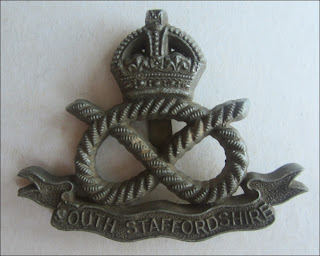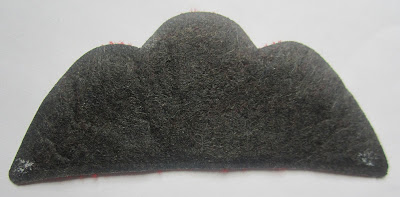These wings were manufactured during the Second World War for pilots who served in the Royal Flying Corps and continued to serve with the Royal Air Force during the Second War. They are stitched with an oatmeal coloured thread and are padded
Hearts and Daggers
Original quality militaria from all countries and periods for sale. To include British and German awards, decorations and medals. We are always looking to purchase quality items.
Please visit website to view other items
Wednesday 30 June 2021
Friday 25 June 2021
WW1 Officers Tank Corps Badge Made by J.R.Gaunt London
This is a lovely badge. Similar to the Tank Corps badge but with a silver tank in the centre and the rest of the badge is bronze. The reverse has the usual two lugs and is stamped J.R.Gaunt. I think these were badges that officers could purchase from J.R.Gaunt.
 |
| WW1 Officers Tank Corps Badge |
An image of the reverse:
 |
| Reverse of Tank Corps Badge showing J.R.Gaunt hallmark |
Friday 12 September 2014
Lovat Scouts Officers Silver Forage Cap Badge
Tuesday 1 October 2013
Tank Corps Cap Badge with Colours of Corps
.JPG) |
| WW1 Tank Corps Cap Badge |
The colours typified the struggle of the Corps - 'From mud,
through blood to the green fields beyond'. This most apt interpretation of the
colours was suggested by Colonel Fuller. The flag is flown with the green
uppermost The story goes that just before the battle of Cumbrai in 1917, General Elles wanting a distinguishing mark for his tank, went into a shop to buy material for a flag. Supplies were short but he came out with a length of green, red and brown silk. He stitched this together and flew it from his tank "Hilda" which he led the corps into battle.
.JPG) |
| Reverse with Tank Corps Colours |
Sunday 9 June 2013
The South Staffordshire Plastic Economy Cap Badge
 |
| The South Staffordshire Plastic Economy Cap Badge |
 |
| Reverse, one of the blades is missing |
Friday 11 January 2013
WW1 Silver War Badge
 |
| WW1 Silver War Badge |
 |
| Reverse |
 |
| Recipient of above silver war badge |
 |
| James Childs Medal index card |
Sunday 30 September 2012
Junior Parachute Company Wing
 |
| Junior Parachute Company Wing |
 |
| Junior Parachute Company Wing |
Subscribe to:
Posts (Atom)


.JPG)
.JPG)